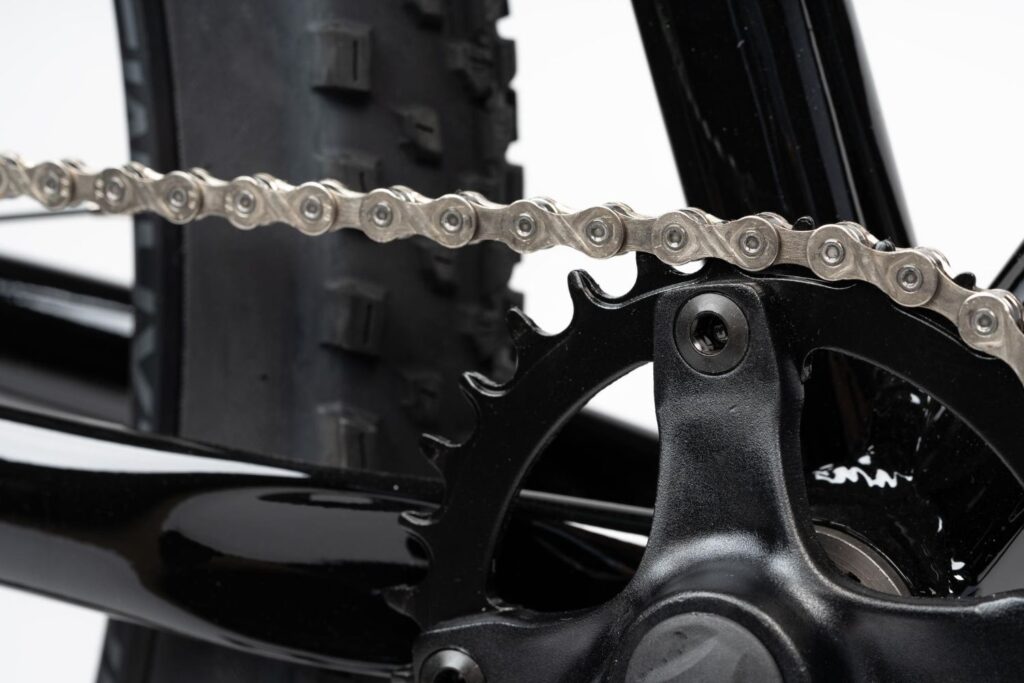Understanding The Importance Of A Well-Maintained Chain
Every mountain biker knows that a properly functioning chain is the heart of the bike’s drivetrain. When your chain is in good shape, you enjoy smooth shifting, efficient power transfer, and a quieter ride. But if it’s neglected, you might experience skipping gears, excessive noise, or even costly damage to other components.
Imagine being on a beautiful ride, feeling the crisp air and fantastic trails, only to be abruptly reminded that your chain has decided to throw a tantrum. Keeping your chain well-maintained isn’t just about performance; it’s about maximizing your ride’s enjoyment.
Components Of A Mountain Bike Chain
A mountain bike chain consists of several key components, each working in harmony to deliver that sweet, smooth ride. Here are some of the main parts you should be aware of:
- Links: The individual segments that make up the chain. These need to be flexible enough to shift without snapping but strong enough to handle the power you exert while riding.
- Inner Plates: These hold the pins and are responsible for connecting the chain’s links together.
- Outer Plates: The parts that interface with the cassette and chainrings. Keeping these clean is crucial for smooth engagement.
- Pins: These are what hold everything together. Wear can cause them to become loose, compromising the chain’s integrity.
- Rollers: Located between the inner and outer plates, they help the chain slide smoothly over the sprockets.
Signs That Your Chain Needs Maintenance
Sometimes, it’s obvious that your chain needs some love, while other times it can sneak up on you. Here are some telltale signs that your chain is due for maintenance:
- Noisy performance: If you hear grinding or rattling noises while riding, it’s time to check things out.
- Skipping gears: When your bike hesitates or skips while trying to shift, your chain might be too stretched or dirty.
- Visible wear: Look for rust, dirt build-up, or stretched links. If you can see wear and tear with your naked eye, don’t ignore it.
- Inconsistent shifts: If your gear changes feel rough or unresponsive, it could be time for a clean or replacement.
Essential Tools For Chain Maintenance
Before diving into chain maintenance, you’ll want to gather a few tools that can make your life a whole lot easier. Here’s a quick list of what I recommend having on hand:
- Chain lubricant: A good quality lube is essential for a smooth-running chain.
- Chain cleaner: A specific bike chain cleaner can help dissolve the grime that builds up over time.
- Brush: A small brush will assist in getting into those tight spots where dirt loves to hide.
- Rag: This is crucial for wiping down components after cleaning.
- Chain checker tool: This handy gadget helps to measure chain wear quickly and accurately.
Step-By-Step Guide To Cleaning Your Chain
1. Preparing The Bike
First off, you want to make sure your bike is stable. Use a bike stand or flip it upside down if you’re comfortable doing that. This will allow you better access to the drivetrain. Just be careful if you choose the latter—nobody wants a bike falling on them.
2. Cleaning The Chain
Now, let’s get to it. Begin by applying the chain cleaner to the chain while rotating the pedals backward. Make sure to keep the cleaner consistent and allow it to penetrate for a minute or two. You’ll see the gunk start to dissolve.
3. Brushing The Chain
Next, grab your brush and scrub the chain thoroughly, getting into all the nooks and crannies. You want to remove any stubborn dirt that clung on for dear life. Do not get overly aggressive as this could damage the chain.
4. Rinsing And Wiping
After scrubbing, wipe the chain clean using a rag. Make sure to get all residue off before moving onto lubrication. And remember, a clean chain can make a world of difference.
5. Lubricating The Chain
With a clean and dry chain, it’s time to lubricate. Apply a small amount of chain lubricant while rotating the pedals backward again. This will help evenly distribute the lube throughout the chain. Make sure not to drown it in oil; a little goes a long way. Less is often more when it comes to chain lubrication.
6. Wiping Off Excess Lubricant
Once you’ve done the application, take another rag to wipe off any excess lubricant. You want to avoid attracting more dirt and grit, so anything remaining can be a danger to your shiny, newly-cleaned chain.
Checking Chain Wear Regularly
It’s smart to keep an eye on your chain’s wear and tear. Over time, chains stretch, and a stretched chain can lead to quicker wear of your cassette and chainrings. That can add up quickly if you need to replace them too. You can easily check the chain’s condition by using a chain checker tool. It’s quick and straightforward.
Using A Chain Checker Tool
Simply insert the tool into your chain link and see how far it goes in. There are generally markings on the checker to indicate when the chain is too worn. If it’s gone beyond the recommended limits, it’s time to partially or completely replace your chain.
A Few Tips To Keep In Mind
- Frequency: Clean and lubricate your chain about every 100-150 miles, or after riding in wet conditions.
- Use the right lube: Different conditions warrant different types of lubricant. For instance, wet lube works best in, you guessed it, wet conditions, while dry lube is great for dusty environments.
- Listen to your bike: Your bike will often give you hints. If it doesn’t sound or feel right, it probably isn’t.
When To Replace Your Chain
Even the best-maintained chain has its limits. Knowing when to replace it is key to ensuring your entire drivetrain stays in good shape. If you notice the chain slipping or skipping more frequently despite cleaning and lubrication, it may be past its prime. Additionally, if a chain checker tool indicates significant wear, it is time to grab a new one.
The Rewards Of A Well-Maintained Chain
When you invest time in maintaining your chain, the rewards can be substantial. You’ll enjoy smoother shifts, increased durability of your components, and an overall more enjoyable ride. Not to mention, there’s a satisfying feeling in knowing you’re taking good care of your bike.
Remember that every time you ride and maintain your chain, you’re also protecting your other bike components. Think of it as a gift that keeps giving. Plus, the less maintenance you need on your cassette and chainrings, the more time you’ll have to hit the trails.
Conclusion
Keeping your MTB chain in tip-top shape is crucial for ensuring a pleasant and efficient ride. Regular cleaning, lubrication, and checking for wear can prevent that all-too-familiar grind of failure mid-ride. By incorporating these simple steps into your routine, you can enjoy the trails hassle-free while maximizing your biking experience. So, grab those tools and start pampering that chain of yours, because a smooth ride is just a clean chain away!






